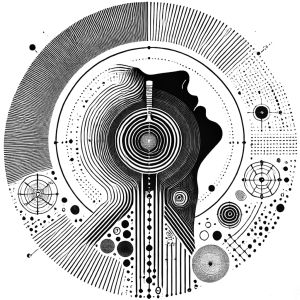InnerMotion – The Guidebook – Breathing

Breathing is a fundamental technique of staying present and connected to your body. It not only provides the necessary oxygen to fuel your movements but also serves as a powerful tool to anchor your focus and enhance your overall dance experience. By paying attention to your breath, you can maintain a deeper connection to your body, regulate your energy, and stay attuned to the music.
- Mindfulness: Begin by simply becoming aware of your breath. Notice the natural rhythm of your inhalation and exhalation without trying to change it. Feel the rise and fall of your chest or the expansion and contraction of your abdomen. This awareness serves as a grounding point, helping you stay connected to your body and the present moment.
- Regulate Your Breath: As you move, pay attention to the speed and depth of your breathing. If you notice that your breath is becoming fast or shallow, it might be a sign that you are overexerting yourself. Slow down your movements and take a few deep, calming breaths to bring your body back to a more balanced state.
- Breath as a Focus Tool: Use your breath to bring your focus back to your body whenever you find your mind wandering. Each time you inhale and exhale, let it serve as a reminder to stay present and connected to your movements and the music.
- Synchronize Breath with Movement: Try to synchronize your breath with your dance movements. For instance, inhale as you prepare for a movement and exhale as you execute it. This synchronization can create a more fluid and harmonious dance experience, enhancing your connection to the music and your body.
- Breath for Emotional Expression: Use your breath to express emotions and deepen your dance. A strong, sighing exhale can help release tension or express relief, while a sharp, energetic inhale can convey excitement or anticipation. Let your breath be a part of your emotional expression in dance.
- Calming Breath: If you feel overwhelmed or anxious while dancing, use slow, deep breaths to calm your nervous system. Inhale slowly through your nose, hold for a moment, and exhale gently and even more slowly through your mouth. This technique can help you regain control and continue dancing with a clear mind.
Exercise
Throughout your dance session, periodically check in with your breath. Notice its rhythm, depth, and quality. Use intentional breathing to stay grounded, regulate your energy, and enhance your presence. If you catch yourself holding your breath or breathing erratically, take a moment to pause, breathe deeply, and reset your focus.
By integrating mindful breathing into your dance practice, you create a powerful tool for maintaining presence, managing energy, and enhancing the emotional depth of your movements. This awareness of breath not only improves your dance experience but also supports your overall well-being, making each dance session a more enriching and fulfilling journey.